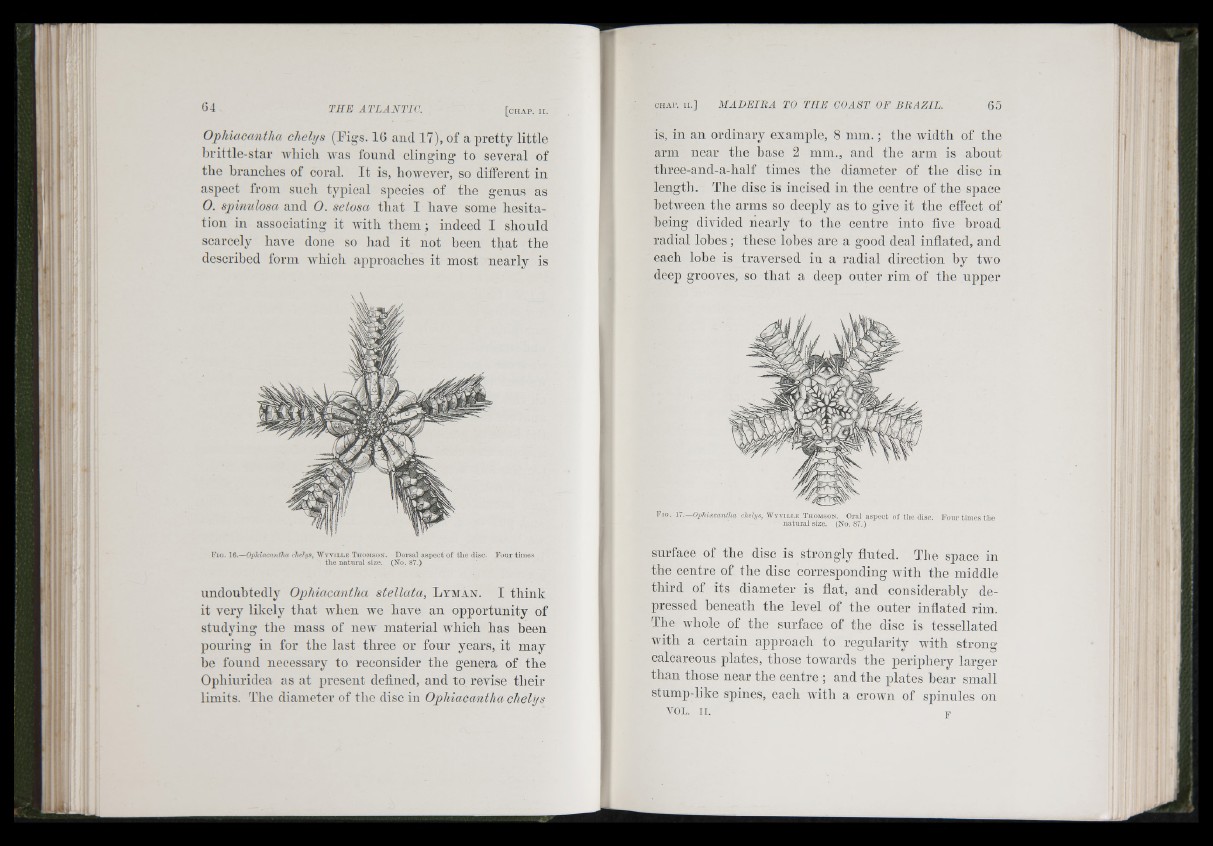
G4 T H E A T L A N T K l [CI IAP. I I .
Opliiaccmtha chelys (Eigs. 16 and 17), of a pretty little
brittle-sta r AAdiicii Avas found clinging to several of
the branches of coral. It is, hoAA'ever, so different in
aspect from such typical species of the genus as
O. spimdosa and O. setosa th a t I have some hesitation
in associating it Avith them ; indeed I should
scarcely have done so had it not been th a t the
described form Avliich approaches it most nearly is
I'To. 16.— 0phiacahtTia chelys, W y v i l l e T h om so n . Dorsal a s p e c t of th e disc. Four tim e s
the n a tu ra l size. (No. 87.)
undoubtedly Ophiacantha stellata, Lyman. I th ink
it very likely th a t Avhen Ave have an opportunity of
studying the mass of uoav material Avhich has been
pouring in for the last three or four years, it may
he found necessary to reconsider the genera of the
Ophiuridea as at present defined, and to revise their
limits. The diameter of the disc in Ophiaeantha ehelys
CIIAP. I I . ] M A D E IR A TO T H E COAST OF B R A Z I L . Go
is, in an ordinary example, 8 m m .; the Avidth of the
arm near the base 2 mm., and the arm is about
tliree-and-a-half times the diameter of the disc in
length. The disc is incised in the centre of the space
hetvA^een tlie arms so deeply as to give it the effect of
being divided nearly to the centre into five broad
radial lobes; these lobes are a good deal inflated, and
each lobe is traversed in a radial direction hy tAvo
deep grooves, so th a t a deep outer rim of the upper
F ig . 17.— Oj-iUoLcantlia ch d y s, W y v i l t . e T h om so n . Oral a s p e c t of th e d is c . F our tim e s th e
n a tu r a l size. (No. 87.)
surface of the disc is strongly fluted. Tbe space in
the centre of the disc corresponding Avith the middle
th ird of its diameter is flat, and considerably depressed
beneath the level of the outer inflated rim.
The Avhole of the surface of the disc is tessellated
Avith a certain approach to regularity Aidth strong
calcareous plates, those toAvards the periphery larger
than those near the centre ; and tbe plates bear small
stump-like spines, each AAnth a croAvn of spinules on
VOL. IT. p